As we outlined in March of last year:
Designed by John Hudson Thomas and built for John Hopkins Spring, a real estate developer, in 1914, the 12,000-square-foot Spring Mansion which sits at 1960 San Antonio Avenue in the Berkeley Hills and was modeled on the Achilleion Palace in Greece, was purchased by John Park, the founder of Fortiss, a management company for casinos and card clubs, for $6.3 million in 2005.
In addition to the seven-bedroom main home, with a 30-foot atrium and ornate living rooms which were recently “given a fresh new look” and played an infamous role in Boots Riley’s “Sorry To Bother You,” the three-acre estate also includes a detached “gymnasium/dance studio, a tennis court, a cottage, and two reflecting pools, and a smaller house, all in need of restoration.”
And having hit the market priced at $7.5 million with a bit of fanfare at the end of 2016, briefly in contract and then subsequently reduced to $6.99 million [in 2018], the list price for the mansion at 1960 San Antonio Avenue [was then] quietly reduced to $5.995 million.
And eschewing any fanfare this time around, the sale of the Spring Mansion has now quietly closed escrow with a contract price of $4.875 million, down 22.6 percent from its 2005-era sale and 35 percent below its 2016 price.
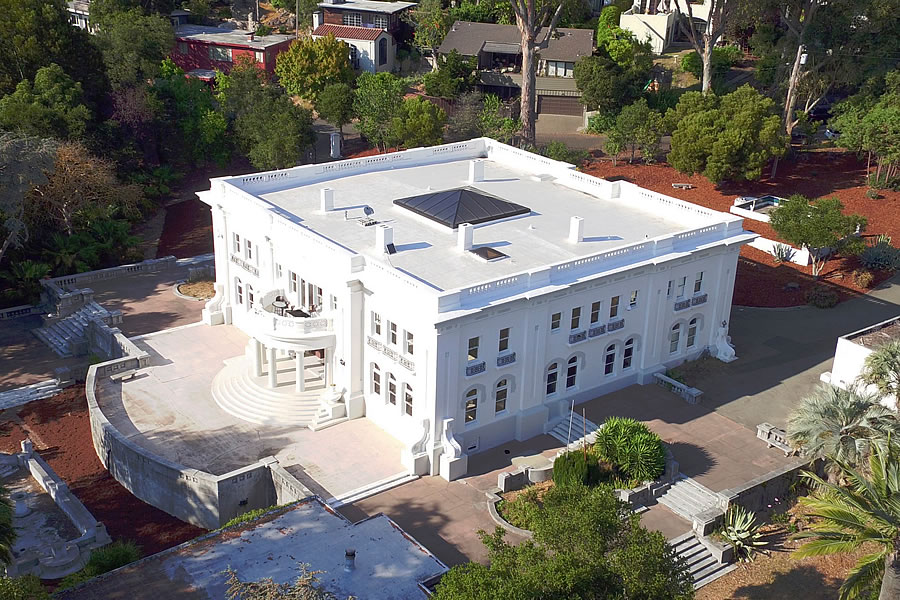
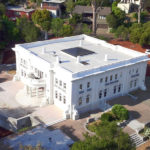
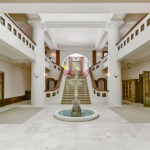
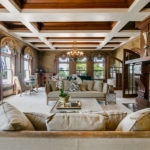
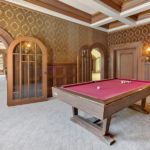
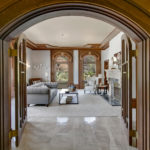

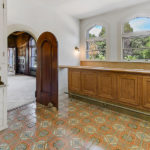
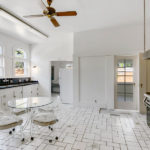




On a slumping hillside with retaining wall issues iirc.
Just the place for me to start up my cult!
You’re not kidding. It has an eerie vibe.
Well at least the presentation was improved a little. And if SS hadn’t been so generous with the candids last time,
probably no one would have checked on that (no at all) SOTA Water Heater….and it might have cleared Six
HELPUS INC.
You know its going to be fun this time around…
Can you shed a light why this building sold at such a low price? It is massive and has nice location. $5-6 million is not a eye-dropping price for a premium SFH in the bay area.
Probably because it’s butt ugly
This was discussed extensively in earlier posts (so to recap):
– “Massive” isn’t necessarily an advantage
– It likely needs substantial mechanical and cosmetic upgrades
– The area is in a slippage zone (not ‘red-taggable’ but disclosure worthy)
As for $6M being “such a low price”, well….I would remind you one could buy a county in some states for that amount.
Thank you for sharing your comments. Very insightful! I guess I haven’t got any opportunity to learn about the market outside California.
If you decide to learn, it will be quite a revelation: many times you will find yourself saying “that’s gotta be a typo”….it won’t be.
I actually walked through this when it had an open house (!) back when it was first listed – before the ‘fresh new look’ – there were significant settlement cracks throughout the structure, it seems that given the slowly-creeping soils in this part of berkeley hills that a giant 12000 sqft structure is much more difficult to keep in one piece than a normal-sized house without very expensive foundation fixing, which may very well cost more than the house itself. I don’t even want to think about earthquake retrofitting would cost. To fix it up to modern standards will require even more. Hopefully whoever bought it has deep pockets to do it right.
That makes a lot of sense. Thank you!
Another thought: Since this is a historic building, can the lot be subdivided into small parcels and build new houses on the empty parcels? If so, the property has a lot more value.
the original 7.5m listing included a ‘proposed’ 4 or 5 sub-division of lots fronting arlington drawn up leaving most of the original 3 acre lot intact for the mansion itself. there is a large dilapidated outbuilding (servant housing?) that would need to be demolished, i doubt that building was historic, but this being in berkeley, who knows.
My first reaction was, hey isn’t that house on the Hayward Fault? Or at least in the fault “crumple zone”. Double checked the USGS fault map and the Hayward Fault trace is on Santa Barbara Rd less than 150 meters away. So its basically in the fault trace crumple zone.
This house has it all. Built on top of the most dangerous fault in the Bay Area. Built on a ridge line which greatly amplifies the shaking of any earthquake. And built on top of a slow moving landslip. So probability of surviving the next big one on the Hayward Fault without partially collapsing / getting red tagged. Around zero.
Not sure of the current pool betting among the USGS seismologists for which fault segment will pop next. Last time I talked to one of those guys most of the money was on the North Segment of the Hayward Fault popping next. The bit that goes through Berkeley. Which is when we get to find out (the hard way) if it really does continue on into the Rogers Creek Fault.
And isn’t this house also in the high risk wildfire zone? Not from the 1920’s North Berkeley wildfire which destroyed most of that part of north Berkeley. But the one back in the 1880’s (I think..). That part of Berkeley looks very like the parts of Oakland that burned in 1991. Same kind of history.
Not much doubt about the Rodgers Creek Fault being a continuation. The bluff on the west side of Point Pinole is a fault scarp, so the Hayward Fault does continue under the bay.
> Built on top of the most dangerous fault in the Bay Area
First, 150 meters is hardly “on top of”. A substantial fraction of the Berkeley Hills is in the Alquist-Priolo zone.
Second, when they talk about the Hayward being dangerous, what they mean is that it crosses a lot of expensive and populated areas. The San Andreas is still going to host bigger quakes.
The North Hayward will probably move within our lifetime. Your assumption that it will cross the Hayward/Rogers boundary (they are almost officially the same fault now) is a worst case scenario. Overall, your gleeful anticipation of quakes and fires leveling the East Bay suggests mental illness.
The issue with this place is the landslide.
@heynonnynonny
Actually I was on landfill in a tilt-up office building in San Rafael in 1989. A lot of fun as I counted the seconds waiting for the building to start collapsing. I knew it was good for maybe 25/30 secs. Max. The shaking stopped at 15. I would have been out of there by 20. Then I got to watch the Marina burn while driving back into SF on the GG Bridge just around sunset.
So I take earthquake risk very seriously. Unless you are in your mid 40’s or older you will not have experienced as an adult a big earthquake in an urban area of California. The last one was Northridge in 1994. So were you around for those ones? Do you have your full earthquake prep kit at home and in your car? I do. Some of us are very aware of the risks.
Faults are nt actually a smooth contact surface a few centimeters wide you know. The actual fracture zone below the subsurface is very dependent on local geology, which in this case are very brittle sandstone and shales. So we are talking an active contact zone of many tens of meters width. If you have ever seen the very high resolution shake maps everything within 100 meters /200 meters of the ground fault trace in this geology is the fault when it comes to maximum ground acceleration when you have a 6.5/7.0 magnitude earthquake. Which is the most probably magnitude for the next big Hayward Fault earthquake.
I suggest you check out the shake maps for the various high probability scenarios. All the high probability ones are on the subsidiary faults in the East Bay. They have the highest shake accelerations and the widest affected areas. The San Mateo segment of the San Andreas is one of the lower probability earthquake scenarios for the near term. Both 1906 and 1989 took most of the stress out the other local segments. Its SoCal which has the San Andreas problem. The recent activity around the Garlock fault has a lot of people worried.
As for this house when it comes to risk order as you said it soil subsidence first when it comes to probability of big problems in any given short term time frame. Long term you have to add in earthquake, then wildfire. But sooner or later its gone. Maybe 5 years, maybe 75 years, but sooner or later, it will be red tagged. Thats just one of the gambles when buying property like this in earthquake country. You may get lucky. Like the last hundred years. Or you might get unlucky, like the people in the East Bay in the previous 50 years before the house was built. At least three very big East Bay earthquakes.
So I’m just one of the locals who just takes it as just part of the deal of living in the Bay Area that sooner or latter you will probably be digging yourself out after an earthquake. Aint nothing gleeful in my attitude, just totally realistic and deadly serious. I did not know anyone who died in 1989 but good friends lost good friends. Like most locals I have a very good idea exactly where all the faults are, where the ground failure / liquafaction zones are, what the probabilities are and I make sure I never live in any of the highest risk areas or in high risk buildings.
Which given all the recent seismic activity on that part of the Hayward Fault (last fifteen years) North Berkeley is very much near the bottom of my places to live list in the Bay Area. Just being realistic.
Being on a deep landslide is not the same thing as being on fill.
6.5/7.0 magnitude earthquake […] is the most probably magnitude for the next big Hayward Fault earthquake.
That is close to the worst case scenario for the Hayward, which is to say it is far from the most probable.
Your advice to be prepared is good, regardless.
Indeed….landslide is probably a little too melodramatic: “(large) block creep” might be a better term.
‘tf”s post is a curious mix of knowledge – or at least the appearance of it (to a layman), bad advice – fleeing a building during a quake is one of the best ways to maximize your chance of becoming a casualty, and general alarmism – only a tiny percentage of (modern) buildings fail, even those built on fill.
Perhaps the strain of knowing “friends who lost friends’ colored his/her viewpoint given that ~ 1 in 100,000 Bay Areans were killed, that’s misfortune at its bleakest.
The fire risk seems a bit overargued too: this is a reinforced concrete building, well set-back on a large lot. Certainly the fire risk in the Bay Area hills is (all too) real, but IMHO this isn’t a particularly good example of something likely to burn. The cheek-by-jowl housing in western SF, probably tops this by a good measure.
Not to minimize anything else that you said but *four* structures burned in the Marina as a result of the Loma Prieta quake. Your comment that you “watched the Marina burn” misstates what happened.
I’ve been a fan of the Spring Mansion architect for some time, Thomas Hudson. He also did the Hume Castle on Buena Vista. I like the guy’s spunk. As far as Spring goes, several issues…all systems need repair, full overhaul of everything: water, heat, power, chimneys, all seven bathrooms, kitchen, new hardwood floors, on and on and on it goes.
The house was built as a direct response to ‘07 Fire, its all poured concrete walls, floors roof. What do you think got added to the concrete to make it extra flame proof? If you guessed massive amounts of asbestos mixed into walls, floors ceilings, you’d be right.
The new owners cannot subdivide, it’s a landmark and must stay that way. Part of the yard that had the pool was annexed into a private swim club for residents of right addresses surrounding hidden pool decks.They will make damn sure no subdividing goes on, they have a gem of a private country club….google map it, the pool is shaped like CA and was once The mansions. It’s just funky cool, like the mansion itself.
Property is a huge victim to the Berkeley slide…house will need full foundation overhaul, and how in the hell do you earthquake proof 110 year old asbo laden concrete? The interior plumbing is a wreck, the water heater is in pantry?
I had fantasies of hitting lotto and renovating It to former glory and what once were incredible botanical gardens….it’s a weird funky whacky Berkeley palace that looks like you could do a Julia Morgan Theater production of Sound of Music on stairs…or Gone with the Wind…sweeping Scarlet upstairs for some civil war boom boom.
I applaud the new owners and hope they don’t grease the way through to tear down and subdivide 3.5 acres. With enough love, enough millions and five to seven years, it could be a crown jewel in our architectural heritage. Like the mansion at the top of Claremont that is currently getting a total facelift, it’s lovely to see our unique homes being renovated to last, hopefully true to the spirit in which they were built…whacky and deep deep pockets and a sense of wonder and humor. I wish the new owners luck and peace on their quest to bring a proud old former star back into the sunlight. I applaud their efforts, unless they are out to turn a quick buck on five ugly prefab houses, then I will lead the picket lines and town hall outcry meetings. I’m going to give them all my support until I see or hear evidence to the contrary….hopefully a family who appreciate history, design and local lore, despite the building challenges. First thr Claremont oil Barron mansion, then Hillside School, now Spring estate all being rescued from the ball by people with. More money than sense of being, of place, of history., it feels like a fun renaissance is a foot in the hills. Hope so, they are treasures.